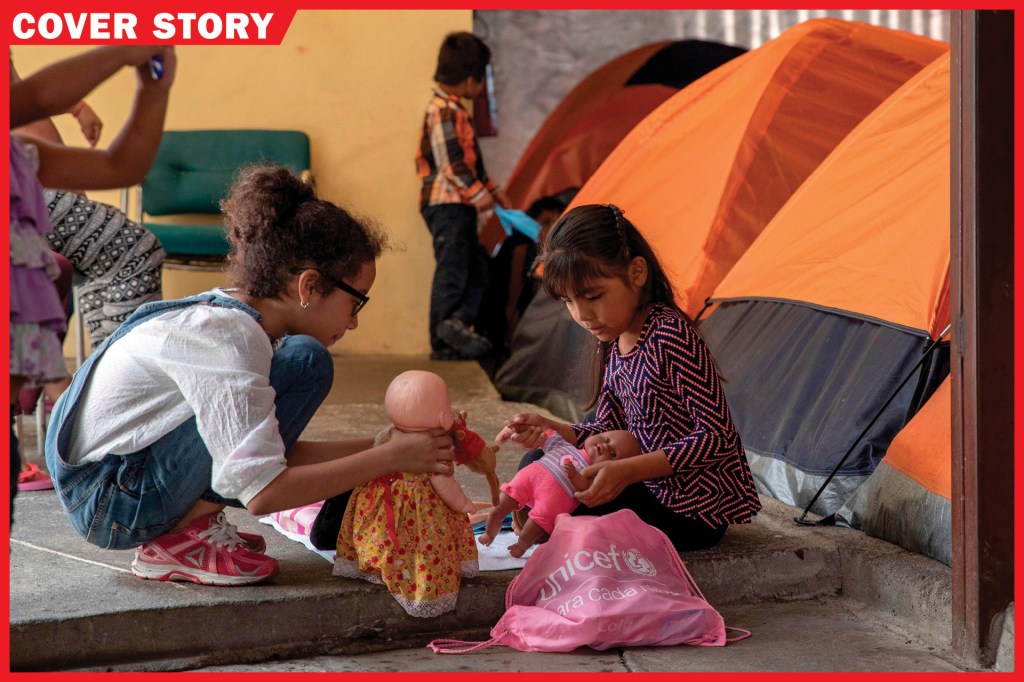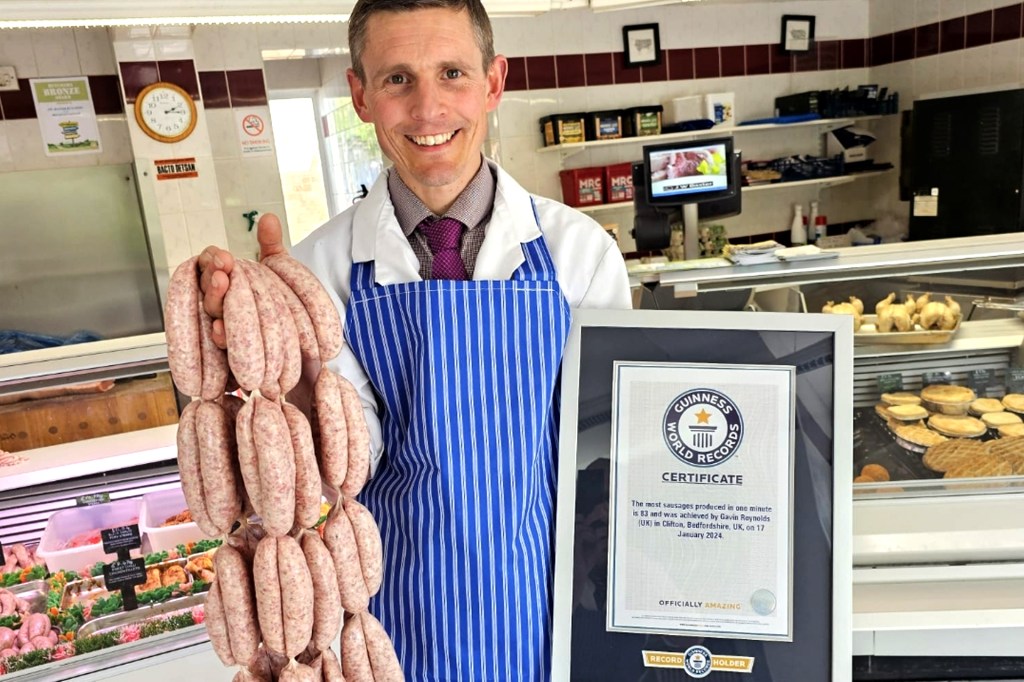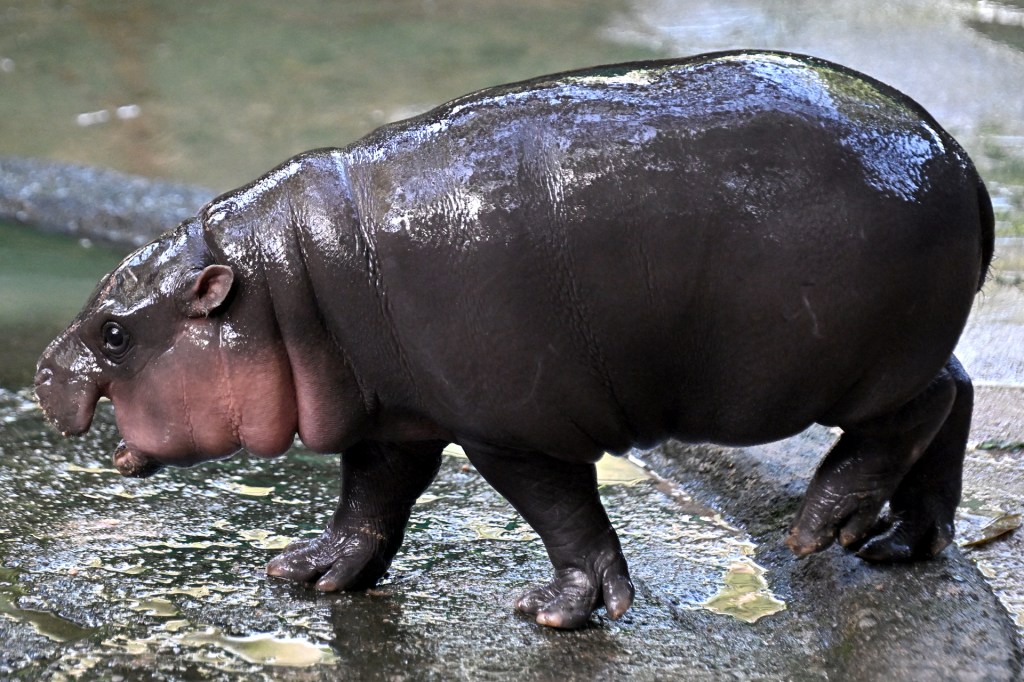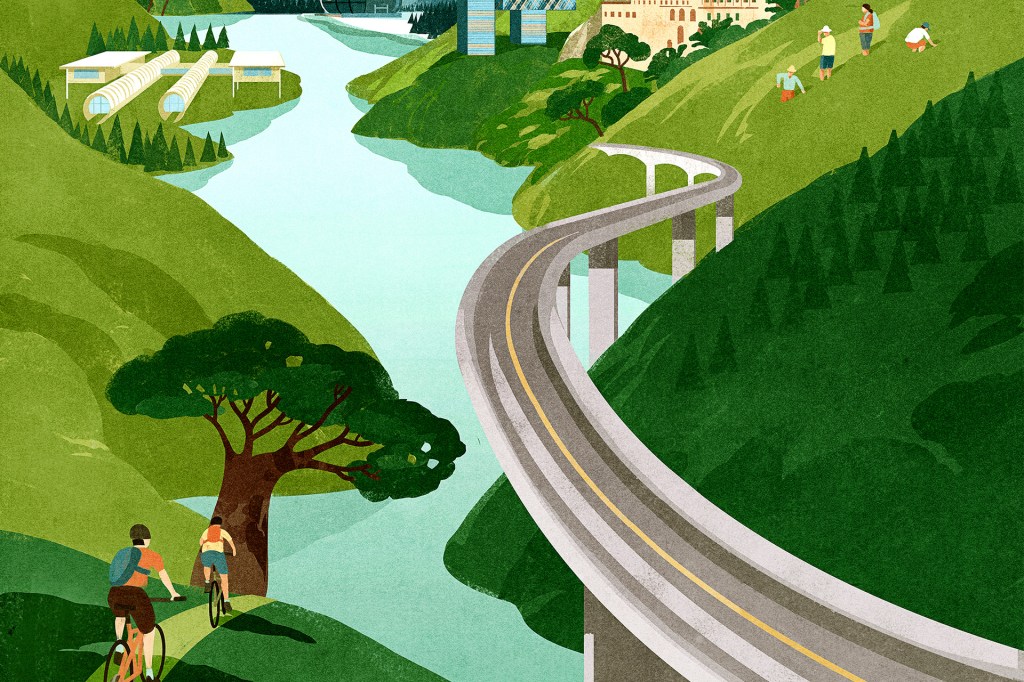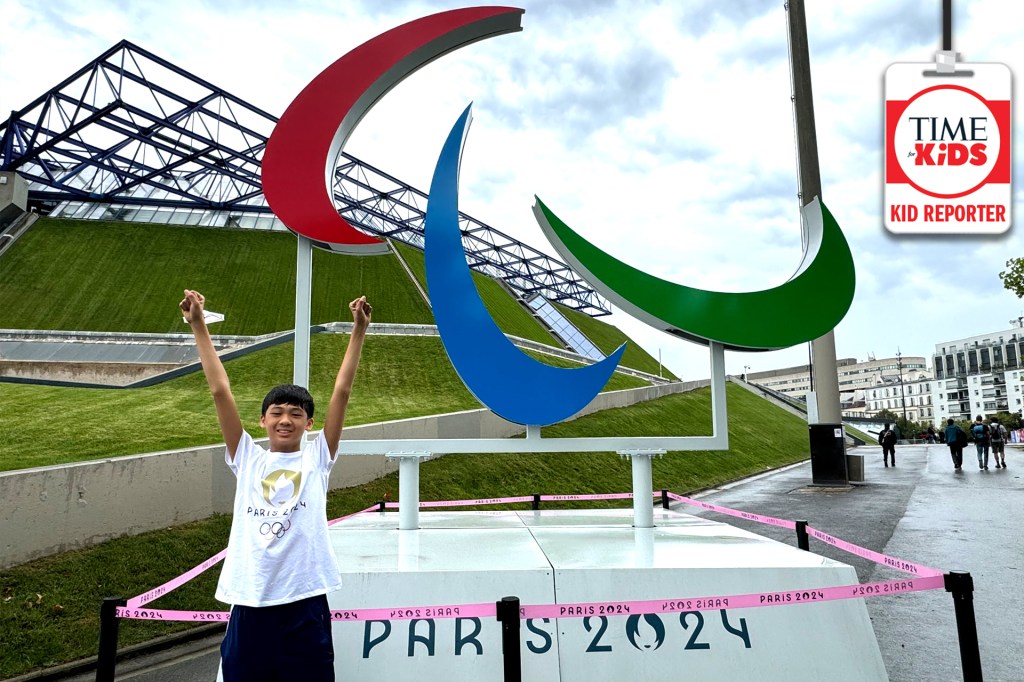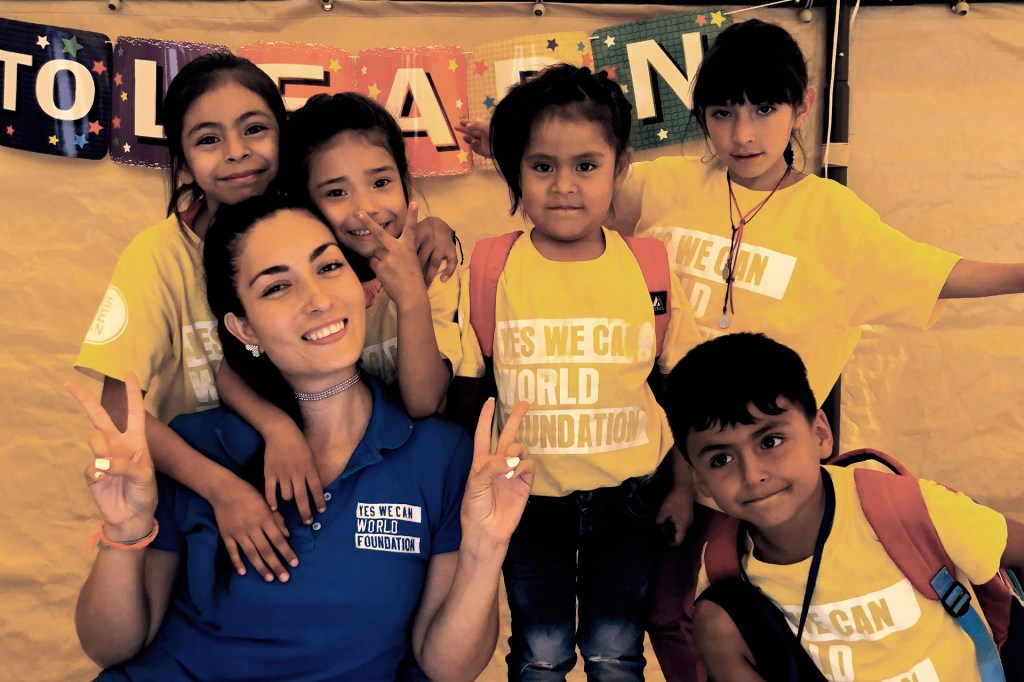

Last December, Estefanía Rebellón volunteered to help migrant families in Tijuana, Mexico. The city is near San Diego, California, along the U.S.-Mexico border. Some of the people Rebellón met in Tijuana had traveled thousands of miles. Many had left home to ask for protection in the U.S. Now they were living in crowded shelters. Some were camped out in tents. “I was concerned about what was happening,” Rebellón told TIME for Kids. “People were very much in need.”
The trip sparked an idea. “When I came back home to Los Angeles, California, I thought, ‘We have to do something.’” She decided to start a school. Often, migrant children and families spend months outside the classroom. Rebellón wanted to help kids continue their education.
She knew from experience how important school can be for kids on the move. When Rebellón was 10 years old, her family fled violence in Colombia. Like other newcomers to the U.S., they found safety in Miami, Florida. “Our whole lives changed,” Rebellón says. “For me, school was where I felt like I met kids who were going through the same things that I was.”
Rebellón and her team opened the Yes We Can World Foundation school in July. Classes are taught in English and in Spanish. The school currently serves 45 students who live with their families in the shelter next door. Rebellón says it is the first bilingual school program for migrant kids on the U.S.-Mexico border.
Rebellón travels between Los Angeles and Tijuana on a regular basis. When I visited her at the Yes We Can school in October, students ran to hug her the minute they spotted her in the schoolyard. Here are photos from that trip, alongside Rebellón’s answers to questions from TIME for Kids.
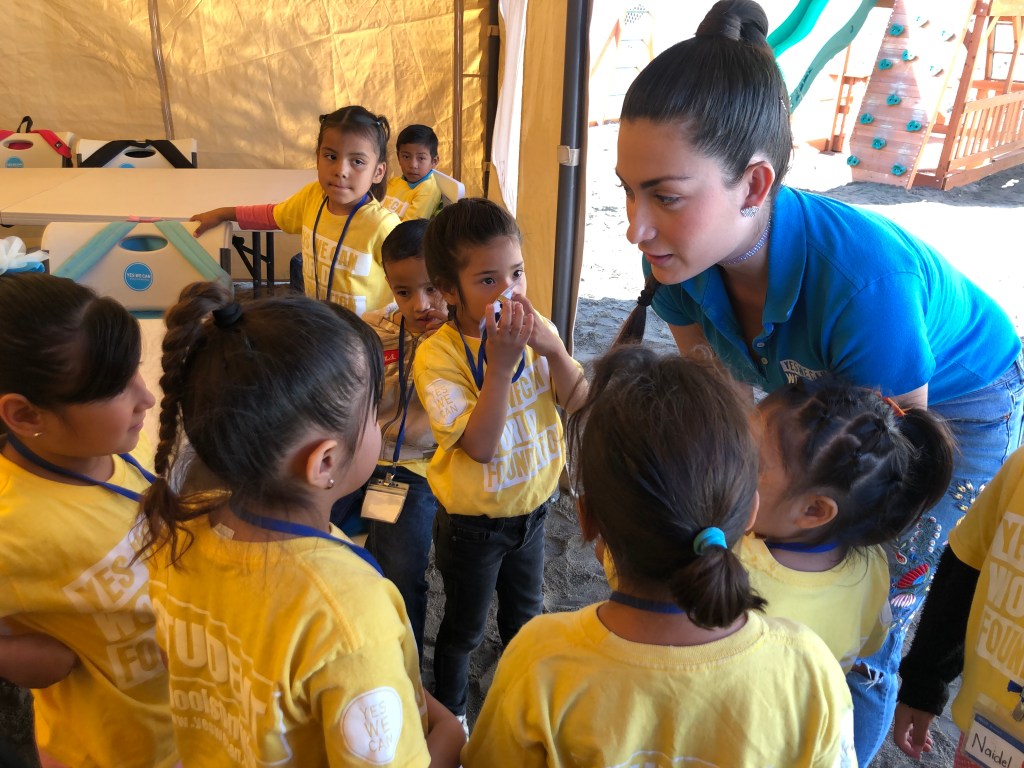
GOOD MORNING Estefanía Rebellón greets students at the Yes We Can World Foundation school in Tijuana, Mexico, on October 3.
JAIME JOYCE FOR TIME FOR KIDSWhy did you decide to start the school?
In my experience as a child coming to the U.S. from Colombia, school was the only safe space that I had. The teachers that helped me were my rock. So I decided to start the school in Tijuana because I see myself in these kids. I see what they’re going through. A personal goal of mine is to help our students realize that they are valued and that their voice matters and their stories matter.
What makes your school unique?
Some of our students have been on the road longer than they have been at the shelter, so their schooling has already been interrupted for so long. What we're providing is a relief education program. It helps fill the gap. In our program, we accept kids the day they come in to the shelter next door. So if the family shows up today, they'll be in our program immediately.
Where do your students come from?
It's a mix. We have kids from Central America. But right now we're seeing a rise in Mexican students, because there's a lot of problems in specific parts of the country, including the Mexican states of Michoacán and Guerrero. People are leaving by the thousands. So we get new students every week.

ON THE BUS Lessons are taught on a bus that’s been turned into a classroom. Students learn in English and in Spanish. Here, teacher Sandra Rodríguez explains words related to family, such as mother (“madre”) and father (“padre”).
JAIME JOYCE FOR TIME FOR KIDSWhat’s a typical day like at your school?
Our school day goes from 9 a.m. to 2 p.m. From 9 to 11, you'll see the class activities happening. Then the kids eat lunch from 11 to 11:30, and 11:30 to 12 is playtime. From 12 to 2 is the rest of the activities.
School lunches are provided by World Central Kitchen, right?
Yes. I really, truly love those guys. They’re just like us. They’re very action-driven. As soon as we knew we were going to start the school, I texted one of my friends who works for World Central Kitchen and said, “Hey, this is what we’re doing. Do you think you guys can help us with the school lunches?” He was like, “Yes, when do you start?” And they added us to their calendar.
What challenges do your students face?
All of our kids have different needs. It's not like a regular classroom where you can be like, “OK, all of you guys are in first grade; all you guys are in second grade. Everything we've done has been created from scratch. We had to create a curriculum that is specific to migrant children.
What feedback have you gotten from parents?
A lot of the parents said, “You know, I used to have to drag my kids to school. Now they line up to be here. They want to be here. They love coming here.”
What do you want people to know about your students?
We hope people understand that there is no difference between our kids and the kids in the U.S. They smile the same way, they hurt the same way, they're curious, they're just so excited to be alive.
What’s next for you and the Yes We Can World Foundation?
Our goal is to grow the program. Right now, we're working on having a little bus that's going to go pick up kids from other shelters in Tijuana. We’re also hoping to open a school in Juárez, across the border from El Paso, Texas. Juárez has a lot of migrants from Central America. So the school would be mostly Central American kids. We’re hoping to open by the end of this year.
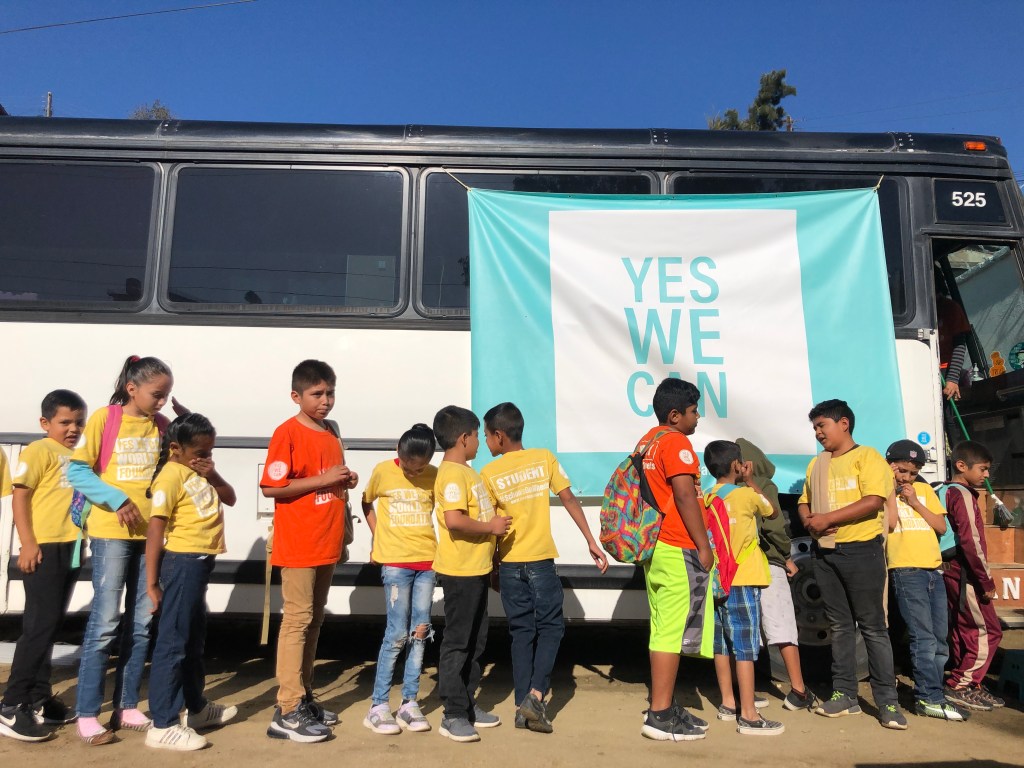
NEW HORIZONS Students in Tijuana prepare for a day of learning aboard the Yes We Can World Foundation school bus. Soon, Rebellón hopes to open a new school for migrant kids in Juárez, across the border from El Paso, Texas.
JAIME JOYCE FOR TIME FOR KIDS




